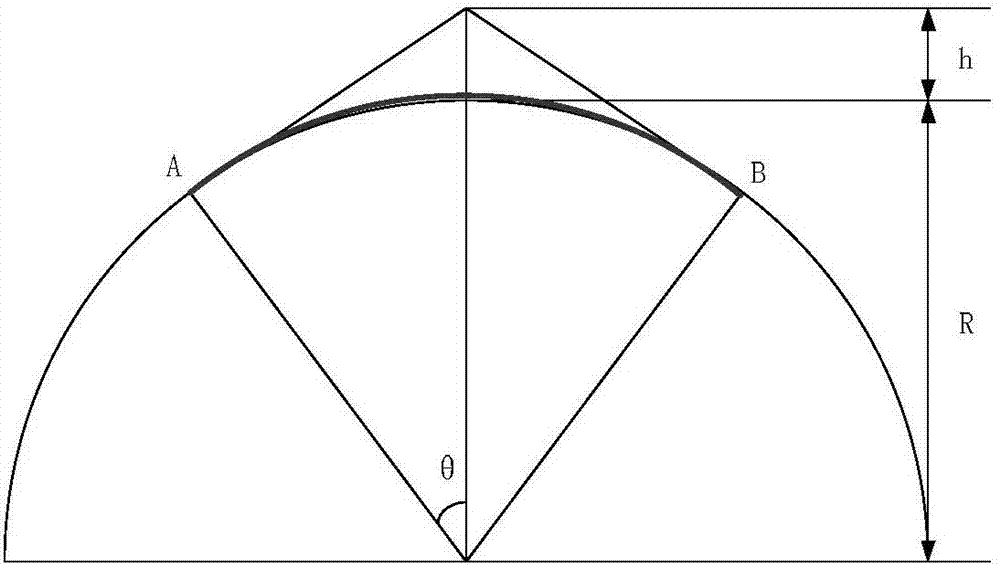Quick rotary ultra-width pendular satellite imaging method
An imaging method and ultra-large-scale technology, which is applied in the field of satellite ultra-large-width swing-sweep imaging, can solve problems such as inability to solve seamless splicing imaging, and inability to meet ultra-large-width imaging in ground areas
- Summary
- Abstract
- Description
- Claims
- Application Information
AI Technical Summary
Problems solved by technology
Method used
Image
Examples
specific Embodiment approach 1
[0031] Specific implementation mode 1: A satellite fast-rotating ultra-large-width push-broom imaging method according to this implementation mode is specifically prepared according to the following steps:
[0032] Step 1. Assuming the satellite orbit height h, take the earth radius R, and calculate the curve distance between the two points AB on the curve of the satellite orbit corresponding to the central angle 2θ That is, the width L perpendicular to the track 5 ,Such as image 3 shown;
[0033] Step 2. Assuming that the detector's field of view is η, calculate the detector's field of view L according to the field of view and the orbital height 1 That is, the width of the flight direction as Figure 4 shown;
[0034] Step 3. Only when there is no gap between the two adjacent imaging areas of the detector can the ultra-large width be achieved. See the schematic diagram of the imaging area figure 2 , that is, the distance L between the center of the optical axis of the ...
specific Embodiment approach 2
[0051] Specific embodiment 2: The difference between this embodiment and specific embodiment 1 is: the width L perpendicular to the track described in step 1 5 Calculated as follows:
[0052] Central angle
[0053] Width perpendicular to track Other steps and parameters are the same as those in Embodiment 1.
specific Embodiment approach 3
[0054] Specific embodiment three: the difference between this embodiment and specific embodiment one or two is: the width L of the flight direction described in step two 1 Specifically:
[0055] Other steps and parameters are the same as those in Embodiment 1 or Embodiment 2.
PUM
 Login to View More
Login to View More Abstract
Description
Claims
Application Information
 Login to View More
Login to View More - R&D
- Intellectual Property
- Life Sciences
- Materials
- Tech Scout
- Unparalleled Data Quality
- Higher Quality Content
- 60% Fewer Hallucinations
Browse by: Latest US Patents, China's latest patents, Technical Efficacy Thesaurus, Application Domain, Technology Topic, Popular Technical Reports.
© 2025 PatSnap. All rights reserved.Legal|Privacy policy|Modern Slavery Act Transparency Statement|Sitemap|About US| Contact US: help@patsnap.com



